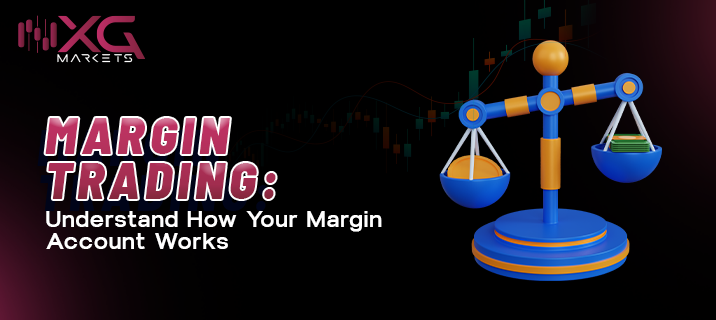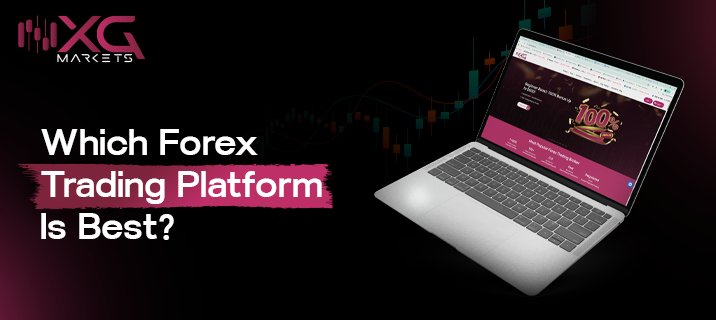
Margin Trading: Understand How Your Margin Account Works
Jul 31, 2025 12:00 amMargin trading helps you make bigger profits with less money. Many traders begin margin trading but often lack an understanding of how their accounts work. This guide provides comprehensive information on margin trading, selecting the optimal leverage for forex, and safeguarding your finances.
What Is Margin Trading?
Margin trading empowers you to command substantial market positions using a fraction of the total trade value as collateral. When you set up a margin account, you invest some of your own money, and your broker provides additional funds to boost your trading power.
Let’s take an Example
If you have $1,000 in your account and utilise a leverage of 1:100, you can trade up to $100,000 worth of currency. So you are effectively controlling a sum that is 100 times greater than your initial capital.
Your broker requires a margin deposit to maintain your open trades. Different currency pairs need different amounts of margin. Popular pairs, such as EUR/USD, require less margin than rare pairs.
Also, your broker calculates margin based on current prices. When currency prices change, your margin changes too. This happens frequently while you trade.
How Does a Margin Account Work?
Your margin account has several important parts that work together. Let's break this down step by step.
Account Balance and Equity: Your account balance shows the money you deposited. Your account equity includes your balance plus any profits or minus any losses from open trades. For example, if you deposit $5,000 and have $500 profit from open trades, your equity is $5,500
If your balance falls below the maintenance margin, you may face a margin call. A margin call is a broker’s alert. It means your equity has dropped too low. You either need to deposit more funds or close some trades.
Benefits and Risks of Margin Trading
There are both benefits and risks associated with Margin Trading.
Benefits of Margin Trading
More Buying Power and Positions: Margin boosts your buying power. You can trade more volume with less money. That’s helpful when you want to act on strong setups but have limited funds. With margin, you can hold more positions.
Risks of Margin Trading
Amplified Losses: Margin trading can amplify your gains, but it can also increase your losses. Even a tiny dip in price could wipe out your entire balance.
Liquidation Risk: If your margin level drops too low, your broker may liquidate your positions. A forced closure, often at a loss, can happen without warning.
Let’s understand some of the terms associated with Margins.
Your margin account consists of several vital components that work together. Let's break this down step by step.
Account Balance and Equity: Your account balance reflects the amount of money you have deposited. Your account equity includes your balance plus any profits or minus any losses from open trades. For example, if you deposit $5,000 and have $500 profit from open trades, your equity is $5,500.
Used Margin: Used margin shows how much money your broker holds for your open trades. When you open a trade, your broker sets aside this money. You cannot use this money for new trades until you close your positions.
Free Margin: Free margin equals your equity minus used margin. If your equity is $5,500 and the used margin is $1,000, your free margin is $4,500.
Let's see a real example. You deposit $2,000. You open a EUR/USD trade that needs $200 margin. Your account now shows:
- Balance: $2,000
- Used Margin: $200
- Equity: $2,000 (no profit or loss yet)
- Free Margin: $1,800
- Margin Level: 1,000%
If your trade gains $100, your equity becomes $2,100. Your free margin becomes $1,900.
You need to Understand the Basics of Forex Trading before you use margin. It will help you in knowing how currency pairs work, how spreads and pip values are calculated, and how orders function will help you manage leveraged trades better.
Leverage in Forex: How It Affects Margin
Understanding Leverage
Leverage multiplies both your profits and losses. The best leverage for forex depends on your experience and risk comfort.
Different leverage creates different margin needs. With 1:50 leverage, you need 2% margin for each trade. With 1:100 leverage, you need only 1% margin. Higher leverage means lower margin but bigger risks.
Smart traders often choose medium leverage between 1:30 and 1:100. This gives good trading power without too much risk. Remember, higher leverage doesn't mean better results.
Higher leverage also lets you open bigger positions with the same money. But bigger positions mean bigger losses if trades go wrong.
Margin Requirements for Different Currencies
Major currency pairs need the smallest margins. EUR/USD, GBP/USD, and USD/JPY typically require a margin of 1% to 3%. These pairs have numerous buyers and sellers, making them more affordable to trade.
Minor currency pairs need slightly more margin, often 2% to 5%. Pairs like EUR/GBP or AUD/CAD are suitable examples. These pairs have medium trading activity but can move more than the major pairs.
Pairs involving emerging market currencies, may require margins exceeding 10% due to increased volatility and reduced liquidity.
Brokers can also change margin requirements during significant news events. They do this to protect against wild price swings. Always check the current margin requirements before trading.
Managing Your Margin Account Smart
Effective margin management begins with monitoring your account numbers.
Never use all your available margin for trading. Instead, keep a safety buffer of 30% to 50% of your account money. This buffer protects you from sudden market moves and margin calls.
Calculate your trade sizes based on risk percentage, not available margin. Risk only 1% to 2% of your account money per trade. This approach keeps you trading even during losing streaks.
Watch your margin usage across all open trades. Avoid investing too much in similar currency pairs. Spreading your trades helps reduce overall account risk.
Best Ways to Trade with Margin
Start with small position sizes until you fully understand the margin. Many new traders use maximum leverage right away. This typically results in rapid account losses.
Use stop-loss orders on every trade to limit losses. Stop losses help save your margin and prevent significant losses. Set stop losses based on chart analysis, not random numbers.
Avoid trading during major news events until you gain experience. News can cause sudden price moves that trigger margin calls. Wait for calm markets before entering new trades.
Monitor how margin requirements fluctuate with varying trade sizes and market conditions. This information helps improve your trading over time.
Choosing the Right Leverage
Day traders often use higher leverage, typically between 1:100 and 1:500. These traders capitalise on small profits from minor price movements. Higher leverage enables them to make significant profits from minor adjustments.
Swing traders typically use medium leverage, ranging from 1:30 to 1:100. These traders hold positions for several days or weeks. Medium leverage gives good trading power while reducing overnight risks.
Long-term traders typically prefer lower leverage, ranging from 1:10 to 1:50. These traders hold positions for months or even years. Lower leverage reduces the impact of short-term price swings.
Common Mistakes to Avoid
Using too much leverage is the most significant and potentially dangerous mistake. Using maximum available leverage leaves no room for error. Small market movements can quickly deplete your account.
Failing to check margin requirements for different currency pairs is another costly mistake. Always verify margin requirements before opening trades. Unexpected high margins can tie up more money than you planned.
Many traders also overlook their margin levels during active trading. Fast market moves can push margin levels dangerously low within minutes. Regular checking prevents nasty surprises.
Emotional trading decisions frequently result in poor margin management. Stick to your predetermined rules no matter how you feel.
Conclusion
Margin trading lets you amplify gains, but it also increases risks. Always choose leverage carefully, monitor your margin account’s health, and use risk management tools. Start with low leverage, especially if you’re new, and scale up only as your skills and experience grow.
If you want to trade smart and confidently, Register your account with NXG Markets, explore their margin trading features, and begin your journey with the best leverage for Forex trading in a secure environment.

.png)




